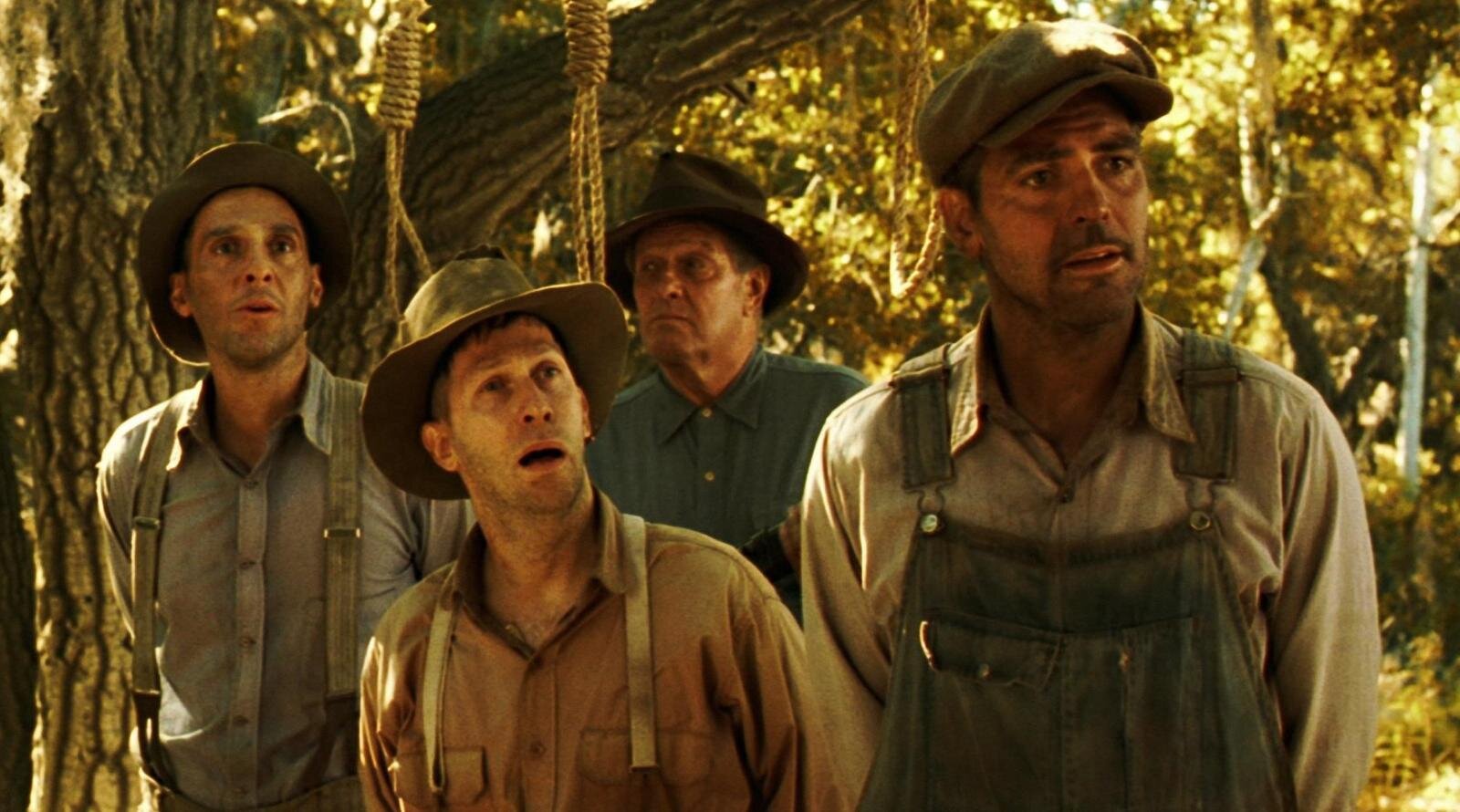FILM 2064: O BROTHER, WHERE ART THOU? (2000)
FILM 2064: O BROTHER, WHERE ART THOU? (2000)
TRIVIA: The film's soundtrack became an unlikely blockbuster, even surpassing the success of the film. By early 2001, it had sold five million copies, spawned a documentary film, three follow-up albums ("O Sister" and "O Sister 2"), two concert tours, and won Country Music Awards for Album of the Year and Single of the Year (for "Man of Constant Sorrow"). It also won five Grammys, including Album of the Year, and hit #1 on the Billboard album charts the week of March 15, 2002, 63 weeks after its release and over a year after the release of the film.
George Clooney, upon reading the script did not immediately understand his character and so sent the script to his uncle Jack, a tobacco farmer who lived in Kentucky, and asked him to read the entire script into a tape recorder. Unknown to Clooney, in his recording, Jack, a devout Baptist, omitted all instances of the words "damn" and "hell" from the Coens' script, which only became known to Clooney after the directors pointed this out to him in the middle of shooting. Jack had never been on a plane before flying in for the premiere.
George Clooney practiced his singing for weeks, but in the end his singing voice was dubbed by country blues singer Dan Tyminski.
Ulysses Everett McGill's childhood home shown at the end of the film, where they go to search for the ring, is actually based on the cabin from The Evil Dead (1981). Joel Coenwas the assistant editor on that film, his first feature.
"O Brother Where Art Thou?" comes from the title of the movie-within-a-movie in Preston Sturges' Sullivan's Travels (1941).
Despite the fact that Ethan Coen described the Odyssey as "one of my favorite storyline schemes" neither of the brothers had read the epic and were only familiar with its content through adaptations and numerous references to the Odyssey in popular culture. According to the brothers, Tim Blake Nelson (who has a degree in classics from Brown University) was the only person on the set who had read the Odyssey.
One of the notable features of the film is its use of digital colour correction to give the film a sepia-tinted look. Joel Coen stated that this was because the actual set was "greener than Ireland." Cinematographer Roger Deakins stated, "Ethan and Joel favoured a dry, dusty Delta look with golden sunsets. They wanted it to look like an old hand-tinted picture, with the intensity of colours dictated by the scene and natural skin tones that were all shades of the rainbow." Initially the crew tried to perform the color correction using a physical process, however after several tries with various chemical processes proved unsatisfactory, it became necessary to perform the process digitally.
The Sirens all appeared in a photo spread for Maxim magazine in 2000.
The cow that gets run over is a CGI creation made by Digital Domain. Fortunately the company already had cow designs in their files having had to create one being eaten by a crocodile in Lake Placid.
This is John Turturto and John Goodman's third collaboration with the Coen brothers since Barton Fiink and The Big Lebowski (1998).
The lyrics in "Man of Constant Sorrow" reference leaving the singer's home in Kentucky. George Clooney is himself from Kentucky.
Included among the "1001 Movies You Must See Before You Die", edited by Steven Schneider.
You can get this film here…
Or follow me along in trying to complete the "1001 Movies You Must See Before You Die" here… (This is the latest edition my book is much older…)













